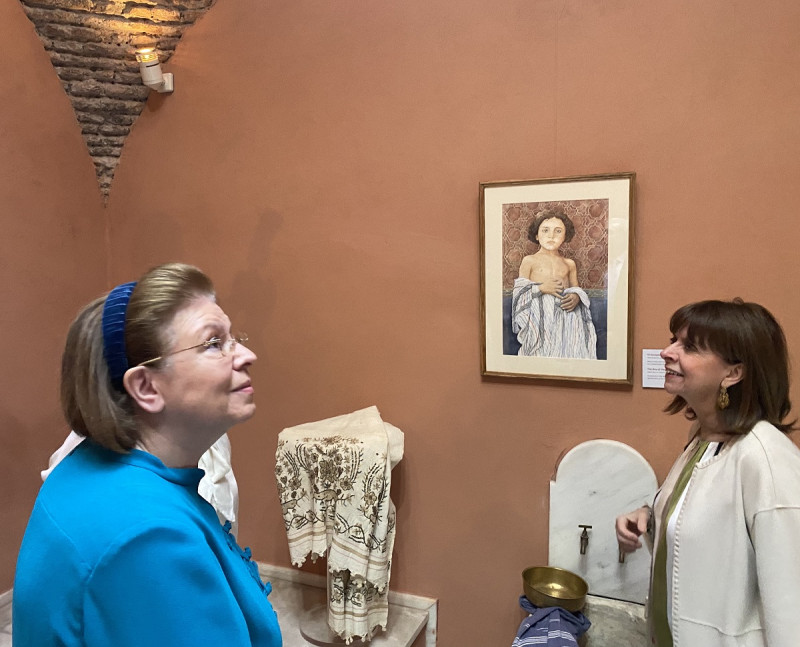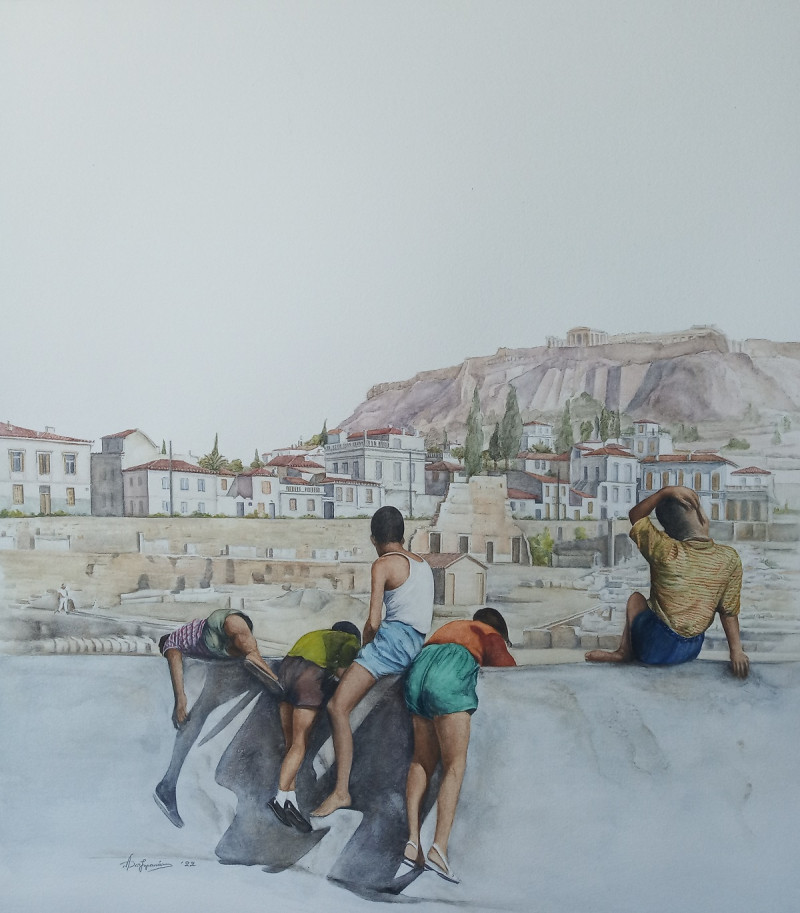The exhibition is accompanied by events, speeches, guided tours, screenings and will last until December 31
A neighborhood of Athens, the Faucetwhich no longer exists on its map, except as a small sample of the 18 buildings that make up the Museum of Modern Greek Culture, is reflected in the visual exhibition “Sweetie. In search of the lost neighborhood”which was inaugurated in Loutro ton Aeridos, by the Minister of Culture and Sports Lina Mendoni, in the presence of S.A. of the President of the Hellenic Republic Katerina Sakellaropoulou.
The exhibition, with visual works Artemis Hatzigiannakisedited by the journalist and author Nikos Vatopoulos, highlights the anthropo-geography of the old lost quarter of Athens, which was located in the area occupied today by the archaeological site of the Ancient Agora. The entire Vrysaki district was expropriated and demolished to reveal the Ancient Agora from the excavation conducted by the American School of Classical Studies. Objects from the Museum’s collections interact with the watercolors of artist Artemis Hatzigiannakis, with the aim of bringing to life aspects of everyday life in Vrysaki and its wider area, on the borders of which are the Bath of the Airs and the Museum of Newer Greek Culture.
As Lina Mendoni said in her greeting, “Taking the name from some fountain or from a corruption of the name of Eurysakis, son of Aiades, to whom a local ancient sanctuary was dedicated, the area was a real melting pot of people, social classes and activities, a fact that shaped both her character and appearance. Next to the middle-class people, employees and professionals, old Athenians, who, mainly from 1860 onwards, built their houses and businesses there, later, refugees and all kinds of representatives of the working class and the poor of the interwar period settled, building next to the neoclassical and in the other urban houses numerous slums, huts and shacks. A neighborhood – a patchwork without order, which was considered degraded, but at the same time was one of the most lively and bustling parts of Athens. Almost the entire district disappeared and was permanently erased from the map of the city. Its inhabitants were forced to leave it, when the State decided to expropriate the area, so that the great excavation of the Ancient Agora could be carried out by the American School of Classical Studies in Athens. In the period 1931-1939, hundreds of buildings, 348 listed in the American School archive, were systematically demolished and more than 5,000 tenants and business owners were displaced after being compensated.”
On the occasion of the opening, Lina Mendoni announced that in the coming months, the Museum of Newer Greek Culture will be opened in the buildings that make up the “Courtyard of Miracles”. As he said, “the Ministry of Culture and Sports, at the beginning of 1999, undertook a decisive initiative to rescue and highlight a small remaining part of the Vrysaki district, east of the Attalos Lodge, which survived the demolition, but for decades had been abandoned to decay next year. They are the 18 buildings that make up the Museum of Modern Greek Culture. With funding for two periods, from the NSRF 2007-2013 and 2014-2020, from national resources of the Ministry of the Interior and with another part from the Recovery Fund, with a budget of over 20,000,000 euros – not including expropriations and studies which raise the budget in 35,000,000 euros – these 18 buildings of the “Court of Miracles” were restored, in order to house the permanent collection of the Museum. At the same time, however, they are reviving with the built and natural environment an entire neighborhood of old Athens and important aspects of the newer cultural history of the city and the country.”
The exhibition is accompanied by events, speeches, guided tours, screenings, with the aim of giving the audience the possibility of a multi-layered experience. The duration of the exhibition is until December 31.
Source: Skai
I have worked in the news industry for over 10 years. I have been an author at News Bulletin 247 for the past 2 years. I mostly cover politics news. I am a highly experienced and respected journalist. I have won numerous awards for my work.












